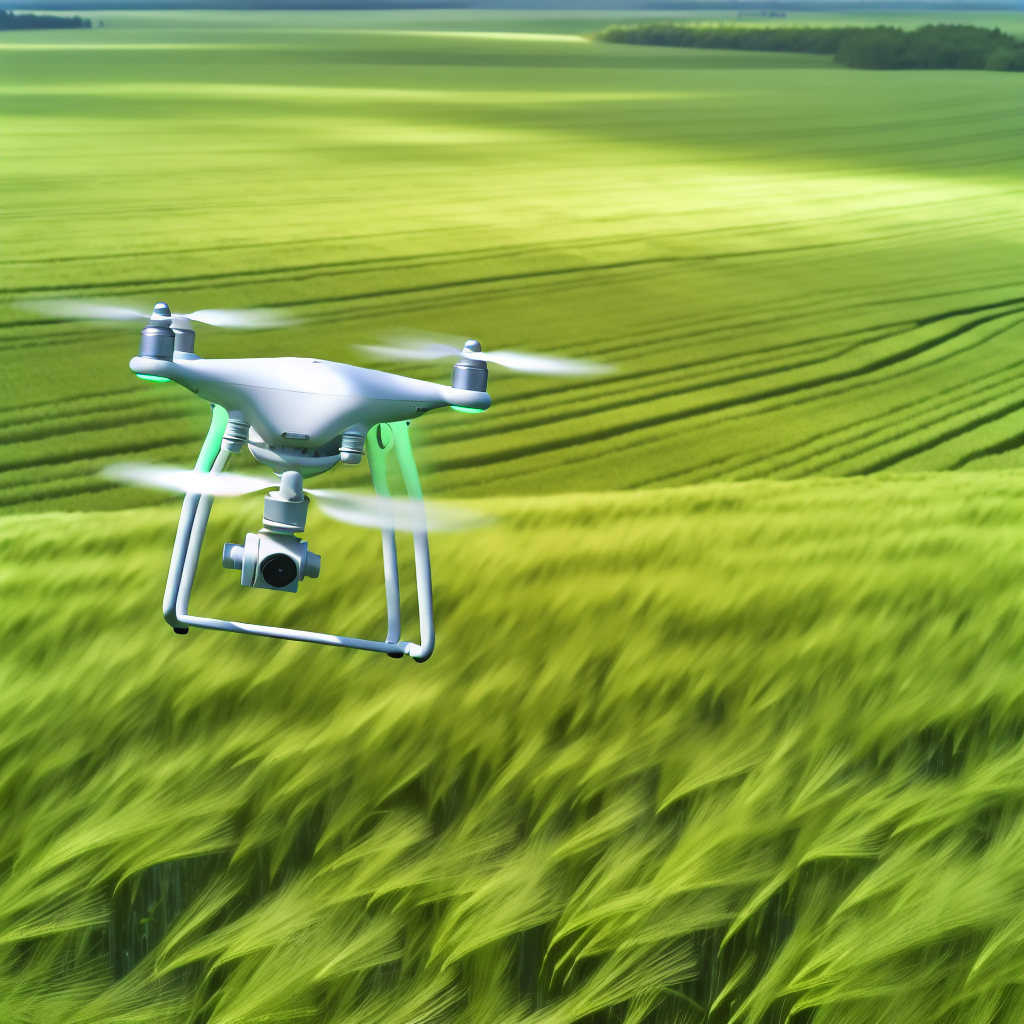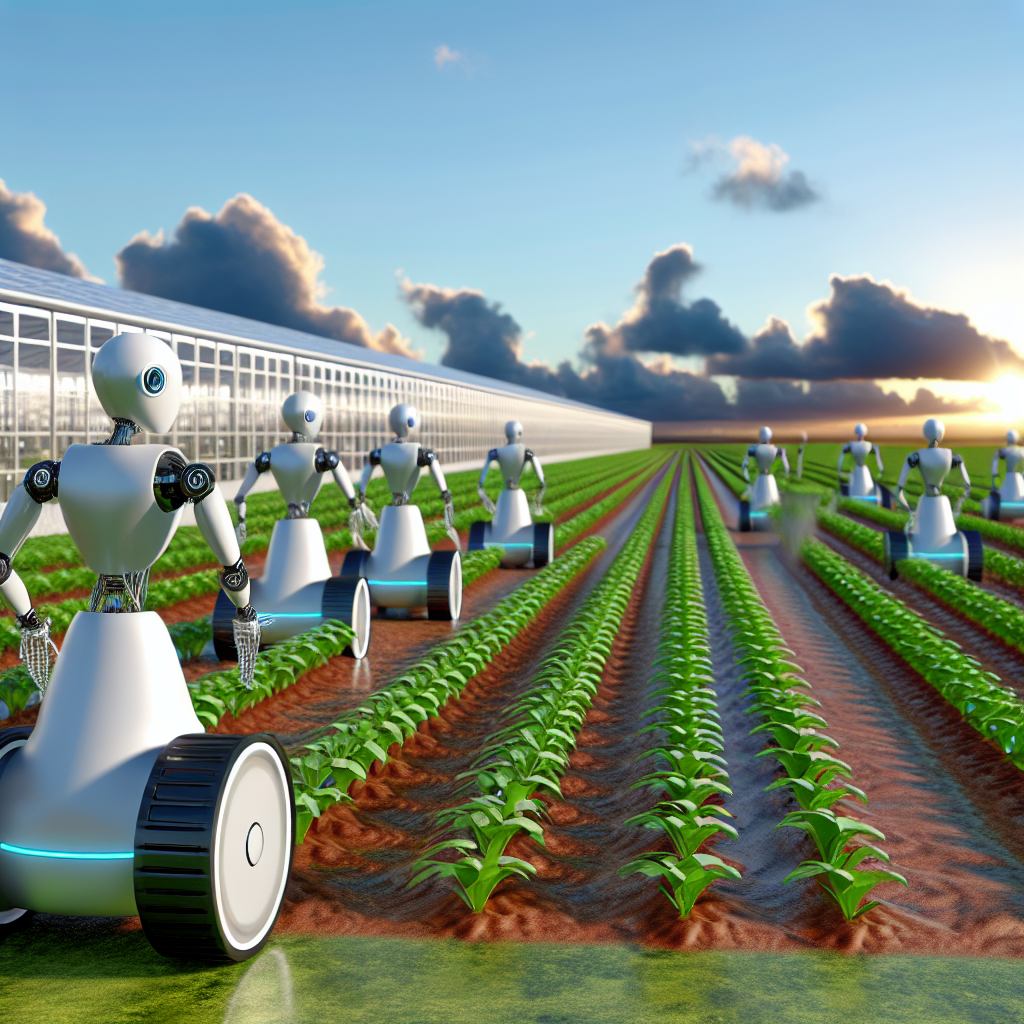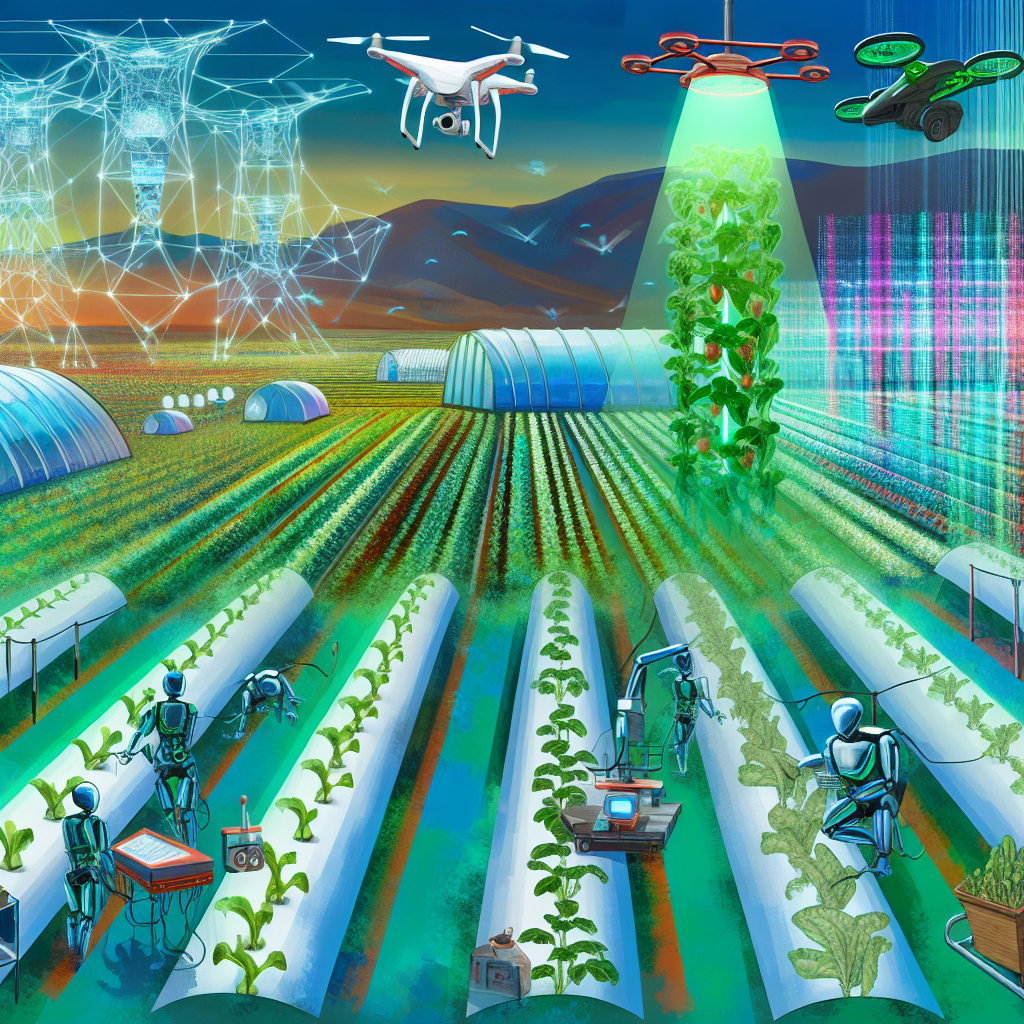AI, machine learning, and predictive analytics are transforming crop management in smart farming by providing data-driven insights for optimizing processes, increasing yields, reducing costs, and improving sustainability. These technologies enable farmers to make informed decisions, anticipate issues, and automate tasks, leading to higher productivity and profitability in agriculture.
As technology continues to advance, the agricultural industry is turning to Artificial Intelligence (AI) and predictive analytics to revolutionize crop management practices. In this article, we will explore how AI and machine learning are being utilized for precision crop management, the future of smart farming, and how predictive analytics is maximizing crop yields. By harnessing the power of predictive analytics in gardening, sustainable agriculture practices are being implemented to ensure efficient and effective crop management techniques. Let's delve into the world of AI-driven crop management and discover the potential it holds for the future of agriculture.
- 1. "Utilizing AI and Machine Learning for Precision Crop Management"
- 2. "The Future of Smart Farming: How Predictive Analytics is Revolutionizing Agriculture"
- 3. "Maximizing Crop Yields with AI-Driven Crop Management Techniques"
- 4. "Harnessing the Power of Predictive Analytics in Gardening for Sustainable Agriculture"
1. "Utilizing AI and Machine Learning for Precision Crop Management"

Utilizing AI and machine learning for precision crop management is revolutionizing the way farmers approach agriculture. By harnessing the power of advanced technologies, such as predictive analytics, farmers are able to make data-driven decisions that result in optimized crop yields and reduced resource wastage.
AI algorithms are able to analyze vast amounts of data collected from sensors, drones, and satellite imagery to provide valuable insights into crop health and growth patterns. Machine learning models can then predict potential issues, such as pest infestations or nutrient deficiencies, before they become detrimental to the crop.
This level of precision in crop management allows farmers to tailor their interventions, such as irrigation or fertilization, to specific areas of the field that require attention. By implementing smart farming practices guided by AI, farmers can maximize productivity while minimizing environmental impact.
Overall, the integration of AI and machine learning in agriculture is paving the way for a more sustainable and efficient approach to crop management. As technology continues to evolve, farmers can expect even greater advancements in precision agriculture, ultimately leading to increased yields and profitability.
2. "The Future of Smart Farming: How Predictive Analytics is Revolutionizing Agriculture"

The future of smart farming is being shaped by advancements in artificial intelligence, machine learning, and predictive analytics. These technologies are revolutionizing agriculture by providing farmers with valuable insights and data-driven decisions for crop management. By harnessing the power of AI, farmers can optimize their processes, increase yields, and reduce costs.
Predictive analytics in smart farming involves using historical data, weather patterns, soil conditions, and other factors to predict future outcomes and make informed decisions. By analyzing this data, farmers can anticipate issues such as pests, diseases, and crop failures, allowing them to take proactive measures to mitigate risks and maximize productivity.
AI-powered tools can also help farmers optimize resource usage, such as water and fertilizer, by providing real-time monitoring and recommendations based on crop needs. This not only improves efficiency but also reduces environmental impact by minimizing waste.
Overall, the integration of AI, machine learning, and predictive analytics in agriculture is transforming the way farmers approach crop management. By embracing these technologies, farmers can increase profitability, sustainability, and overall success in the ever-evolving world of agriculture.
3. "Maximizing Crop Yields with AI-Driven Crop Management Techniques"

One of the key benefits of using artificial intelligence in gardening is the ability to maximize crop yields through AI-driven crop management techniques. By leveraging machine learning and predictive analytics, farmers can make more informed decisions about when to plant, water, fertilize, and harvest their crops.
AI can analyze vast amounts of data, including weather patterns, soil conditions, and crop health indicators, to determine the optimal conditions for crop growth. This allows farmers to adjust their practices in real-time, leading to healthier plants and higher yields.
Smart farming technologies, powered by AI, can also automate tasks such as irrigation and pest control, reducing labor costs and increasing efficiency. By constantly monitoring and analyzing crop data, AI can help farmers identify potential issues before they escalate, leading to better crop management practices and ultimately, higher yields.
Overall, the use of AI in crop management offers a promising solution for improving agricultural productivity and sustainability. By harnessing the power of predictive analytics and machine learning, farmers can optimize their practices and maximize crop yields like never before.
4. "Harnessing the Power of Predictive Analytics in Gardening for Sustainable Agriculture"

Predictive analytics, a key component of artificial intelligence and machine learning technologies, is revolutionizing the way we approach crop management in gardening and agriculture. By harnessing the power of predictive analytics, gardeners and farmers can make more informed decisions about their crops, leading to more sustainable practices and increased yields.
One of the main advantages of using predictive analytics in gardening is the ability to anticipate and prevent potential issues before they arise. By analyzing data on weather patterns, soil quality, pest populations, and crop growth rates, AI algorithms can predict when and where problems may occur, allowing farmers to take proactive measures to mitigate them. This not only helps to reduce crop losses and increase productivity but also minimizes the need for harmful pesticides and fertilizers, promoting more sustainable farming practices.
In addition, predictive analytics can optimize resource management in gardening, helping farmers to use water, nutrients, and other inputs more efficiently. By analyzing data on crop performance and environmental conditions, AI algorithms can recommend the optimal times for planting, watering, and harvesting, as well as the most effective methods for pest control and soil enrichment. This not only saves time and labor but also reduces waste and environmental impact, making farming more sustainable in the long run.
Overall, the integration of predictive analytics into gardening and agriculture is enabling a new era of smart farming, where data-driven decision-making leads to more sustainable practices and higher yields. By harnessing the power of AI and machine learning technologies, farmers can gain valuable insights into their crops and make informed decisions that benefit both the environment and their bottom line.
In conclusion, the integration of artificial intelligence, machine learning, and predictive analytics in gardening and agriculture has revolutionized crop management techniques. By harnessing the power of AI-driven technologies, farmers and gardeners can optimize their yields, reduce waste, and promote sustainable practices. The future of smart farming lies in the utilization of predictive analytics for precision crop management, paving the way for a more efficient and productive agricultural industry. As we continue to explore the possibilities of AI in gardening, the potential for increased crop yields and environmental stewardship is limitless. Embracing these innovative technologies is essential for the advancement of sustainable agriculture and the future of food production.





